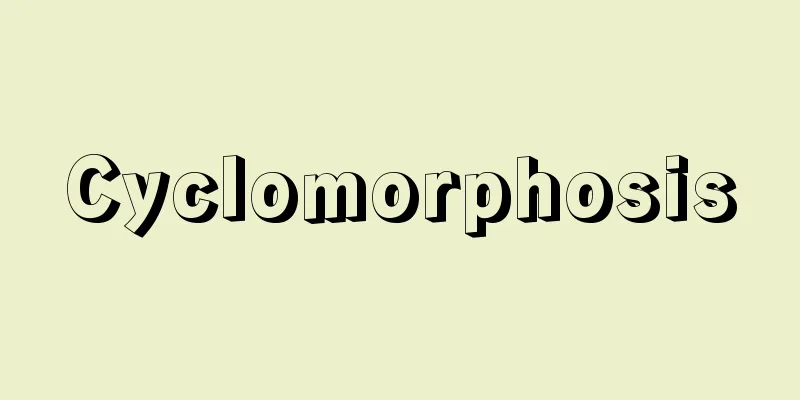Fruit juice - Kaju

|
A general term for the juice extracted from fruits. Fruits are naturally high in water, so juice can be easily extracted by squeezing them. It is thought that it was first made for fermenting wine, so it has a very long history. Fruit juice is generally called "juice," but legally it is regulated to be 100% juice. Products made by diluting, seasoning, mixing, etc. are called fruit juice drinks or soft drinks. [Tomomi Kono and Yonago Yamaguchi] kindsAccording to the classification of JAS (Japan Agricultural Standards), fruit drinks are classified into concentrated fruit juice, fruit juice, mixed fruit juice, fruit juice with granules, mixed fruit and vegetable juice, and drinks with fruit juice. By type of ingredients, they are divided into orange, satsuma mandarin, grapefruit, lemon, apple, grape, pineapple, peach, and others. Tomato juice and tomato mixed juice are classified as tomato processed products, and mixed fruit and vegetable juices with 50% or more fruit juice are included in fruit drinks. The raw material for fruit drinks is fruit juice, concentrated fruit juice, or reconstituted fruit juice made by diluting concentrated fruit juice. When reconstituted fruit juice is used as the raw material, it is described as "concentrated reconstituted." Fruit juice is made using one type of fruit juice (squeezed fruit juice, reconstituted fruit juice, concentrated fruit juice, etc.). Sugars and honey may be added. It is labeled with the name of the fruit used, such as orange juice or apple juice. Juice that combines two or more types of fruit juice is labeled as fruit mixed juice, and juice that adds citrus gizzards (small granular fruit pulp) or shredded pulp of other fruits is labeled as fruit juice with fruit particles. Squeezed or strained vegetable juice mixed with fruit juice that contains 50% or more fruit juice is called fruit/vegetable mixed juice. Sugars and honey may be added, and it is mandatory to label it as "sweetened." The above drinks are not diluted as the name suggests. Drinks that contain less than 100% fruit juice but have been adjusted to 10% or more are classified as fruit juice drinks. JAS standards stipulate the types of fruit that can be used for each beverage, the concentration and flavor of the juice, additives, etc., and prescribe the labeling of the name (product name), ingredients, manufacturer, expiration date, etc. Labeling restrictions prohibit the use of terms such as "raw," "fresh," "natural," and "natural," while terms such as "genuine" and "pure" are limited to fruit juices that do not contain anything other than natural flavorings. [Tomomi Kono and Yonago Yamaguchi] Manufacturing methodGeneral fruit juiceThe production of regular fruit juice involves processes such as crushing, squeezing, sieving, filtering, clarification, deaeration, and sterilization. (1) Crushing and squeezing: Use a method appropriate for the raw materials, but in any case, care must be taken not to squeeze too hard, as it can introduce unpleasant tastes such as bitterness. In particular, with citrus fruits, a lemon squeezer or similar device is used to rotate and extract only the juice, to avoid introducing bitterness. (2) Sieving, Filtration, and Clarification The squeezed juice is passed through a sieve, centrifuge, homogenizer, etc. to homogenize the juice and increase its viscosity. In order to obtain clear juice, a clarification process is also performed. (3) Deaeration The squeezed juice contains a large amount of air, and if it is left as is, it will oxidize with oxygen, causing browning and deterioration. To prevent this, the juice is placed in an airtight container and subjected to a vacuum to perform vacuum deaeration. (4) Sterilization: High-temperature flash sterilization is used to sterilize microorganisms and stop the action of enzymes at the same time. Fruit drinks are thermally sterilized at 93-94°C for 30 seconds, then rapidly cooled to below 85°C. If the cooling speed is slow, the quality of the juice will deteriorate. For canned and bottled products, the containers are hot-filled at around 80°C. [Tomomi Kono and Yonago Yamaguchi] Concentrated fruit juiceIn the case of concentrated fruit juice, processes such as concentration, recovery of aromatic components, sealing and storage are required. (1) Concentration: Methods such as vacuum concentration at low temperatures and freeze concentration are used to preserve the color, flavor, vitamin C, etc. of the fruit juice. (2) Recovery of aromatic components When concentrating, aromatic components of apples, grapes, etc. evaporate, so a method is used in which the aromatic components are recovered in advance and then returned after concentration. In the recovery method, the juice is passed through a preheater and a heater at a constant speed for a short period of time, and the juice is separated in a juice separator. The remaining aromatic components are then recovered by rectification. (3) Sealing and storage The concentrated juice is flash pasteurized and then bottled. To prevent deterioration of quality, it is stored at 0-5°C. [Tomomi Kono and Yonago Yamaguchi] FeaturesFruit juice is extracted from fresh fruit in a short time, and is then sterilized by heating and the enzymes are destroyed, so vitamins and other components remain quite intact. This makes it useful as a nutritional drink. However, when it is diluted into a juice drink, the nutritional value of the juice itself is reduced. If the storage conditions are good, fruit juice will not change much in flavor or nutritional value even if it is stored for several years. [Tomomi Kono and Yonago Yamaguchi] "The Age of Fruit Juice: A History of the Development of Fruit Juice in Japan" by Sanro Mihori and Yoshio Okamoto (1982, Food Publishing Company)" ▽ "The History of the Development of Fruit Drink Technology" (1990), edited and published by the Fruit Juice Technology Research Group of the Japan Fruit Juice Association" ▽ "An Introduction to Fruit Drinks, expanded and revised edition (1991, Japan Food Journal Company) by Haruo Hoshi" ▽ "Fruit Juice Guidebook: The Current State and Future of Production, Containers, Distribution and Consumption Overseas" by Miyoshi Yamazaki (1992, Nippo)" ▽ "The Latest Encyclopedia of Fruit Juice and Fruit Drinks, supervised by the Japan Fruit Juice Association (1997, Asakura Publishing Company)" Source: Shogakukan Encyclopedia Nipponica About Encyclopedia Nipponica Information | Legend |
|
果実類の搾汁(さくじゅう)の総称。果物はもともと水分が多いため、これを搾れば簡単に果汁がとれる。ワインの発酵用としてつくられたものが初めと考えられるから、歴史は非常に古い。果汁は一般にジュースとよばれるが、法的には100%のものと規定される。薄めたり、調味、混合などして製品にしたものは果汁入り飲料、清涼飲料という。 [河野友美・山口米子] 種類JAS(ジャス)(日本農林規格)の分類による果実飲料には濃縮果汁、果実ジュース、果実ミックスジュース、果粒入り果実ジュース、果実・野菜ミックスジュースおよび果汁入り飲料がある。原料の種類別には、オレンジ、ウンシュウミカン、グレープフルーツ、レモン、リンゴ、ブドウ、パイナップル、モモと、その他に区分されている。トマトジュースとトマトミックスジュースはトマト加工品の規格に分類され、果実と野菜の混合ジュースは果汁が50%以上のものが果実飲料に含まれる。 果実飲料の原料となる果汁には、果実の搾汁、濃縮果汁、濃縮果汁を希釈して元に戻した還元果汁が用いられる。原料に還元果汁を用いた場合には「濃縮還元」と記載される。 果実ジュースは1種類の果汁(果実の搾汁、還元果汁、濃縮果汁など)を用いたもの。砂糖類や蜂蜜(はちみつ)等を加えてもよい。原料果実の名をつけて、オレンジジュース、リンゴジュースと表示する。2種以上の果汁を混合したジュースは果実ミックスジュース、柑橘(かんきつ)類の砂嚢(さのう)(小さい粒状の果肉)や他の果実の果肉の細断したものを加えたものは果粒入り果実ジュースと品名表示される。野菜の搾汁や裏漉(うらご)しと果汁を混合したもので果汁が50%以上のものは果実・野菜ミックスジュースという。砂糖類や蜂蜜等を加えることができ、「加糖」と表示することが義務づけられている。 以上のものは「ジュース」と品名にあるように希釈したものではない。果汁分が100%未満で10%以上に調整したものは果汁入り飲料に区分される。 JAS規格ではおのおのの飲料について使用できる果実の種類、果汁の濃度や風味、添加物などを規定し、名称(品名)、原材料、製造者、賞味期限などの表示を規定している。表示規制としては、生、フレッシュ、天然、自然の用語は使用が禁止、純正、ピュアーなどは果実ジュースで天然香料以外のものを使用していないものだけに限られる。 [河野友美・山口米子] 製法一般果汁一般果汁では破砕と搾汁、篩別(ふるいわけ)・濾過(ろか)・清澄、脱気、殺菌などの工程がある。 (1)破砕と搾汁 原料に適した方法を用いるが、いずれの場合も、あまり強く搾汁すると苦味などの異味成分が混入するので注意を要する。とくに柑橘類は苦味が入らないよう、レモン搾り器のようなものを回転させて液汁のみをとる。 (2)篩別・濾過・清澄 搾汁された果汁は篩別機、遠心分離機、ホモジナイザー(均質機)などにかけ、果汁を均一化し粘稠(ねんちゅう)性を増す。透明な果汁を得るには、このほかに清澄操作を行う。 (3)脱気 搾汁された果汁は多量の空気を液中に含み、このまま放置すると酸素によって酸化し、褐変(かっぺん)や変質の原因となる。これを防ぐため、果汁を密閉容器の中に入れて真空にし、真空脱気を行う。 (4)殺菌 高温瞬間殺菌法で微生物を滅菌し、同時に酵素の働きを止める。果実飲料では93~94℃、30秒間熱殺菌後、急速に85℃以下に冷却する。冷却速度が遅いと果汁の品質が悪くなる。缶詰、瓶詰では、80℃程度で容器に熱充填(じゅうてん)する。 [河野友美・山口米子] 濃縮果汁濃縮果汁の場合は、濃縮、芳香成分の回収、密封・貯蔵などの工程を必要とする。 (1)濃縮 果汁の色調、香味、ビタミンCなどを損なわないように、低温での真空濃縮、凍結濃縮などの方法がとられる。 (2)芳香成分の回収 濃縮のとき、リンゴ、ブドウなどでは芳香成分が揮発するので、あらかじめ芳香成分を回収しておき、濃縮後ふたたび戻す方法がとられる。回収法は、果汁を一定速度で予熱器と加熱器に短時間通過させ、果汁分離機で果汁を分離する。そして残った芳香成分を精留して回収する。 (3)密封・貯蔵 濃縮された果汁は瞬間殺菌後、瓶詰にする。品質の落ちるのを防ぐため、貯蔵は0~5℃で行う。 [河野友美・山口米子] 特色果汁は、短時間に新鮮な果実から搾汁し、加熱殺菌および酵素の破壊を行うため、ビタミンなどの成分はかなりよく残存している。したがって栄養的な飲料として有用である。しかし、希釈した果汁入り飲料になると、果汁としての栄養的価値は少なくなってしまう。果汁は、保存条件がよければ、数年間貯蔵しても風味および栄養価値の変化は少ない。 [河野友美・山口米子] 『三堀参郎・岡本義雄著『果汁の時代 日本果汁発展外史』(1982・食品出版社)』▽『日本果汁協会果汁技術研究部会編・刊『果実飲料技術発展史』(1990)』▽『星晴夫著『果実飲料入門』増補改訂版(1991・日本食糧新聞社)』▽『山崎三吉著『果汁ガイドブック 海外にみる生産・容器・流通・消費の現状と将来』(1992・日報)』▽『日本果汁協会監修『最新 果汁・果実飲料事典』(1997・朝倉書店)』 出典 小学館 日本大百科全書(ニッポニカ)日本大百科全書(ニッポニカ)について 情報 | 凡例 |
Recommend
Sixgill shark
...A marine fish of the family Sixgillidae in the...
Ilex dimorphophylla (English spelling)
…[Hiroshi Aramata]. … *Some of the terminology th...
Bitter Sea
〘Noun〙 (also "kugai") A Buddhist term. A...
Oil - oil
Oils are generally defined as substances that are...
Mount Takago
This mountain is located in the southwest of Chib...
olfactory bulb
…This is thought to be important not only for the...
Bed sore (Decubitus)
What is the disease? Sustained pressure reduces o...
Ginkgo nuts - Ginkgo nuts
A corrupted version of "gin'an," it ...
Muneyoshi Yanagi
Art critic and religious philosopher. Known as an...
Red-spotted finch - Red-spotted finch
...Some scholars believe that this family is more...
Pazyryk
A group of burial mounds located about 600 km sout...
Udaiyar (English spelling)
...In 1610, the kingdom of Vijayanagar was establ...
Noto Province
The old name of the province that occupies most o...
AIDS
The name AIDS was coined in September 1982 from t...
Sāluva (English spelling) Saluva
…1336-1649. It was succeeded by four different ro...









